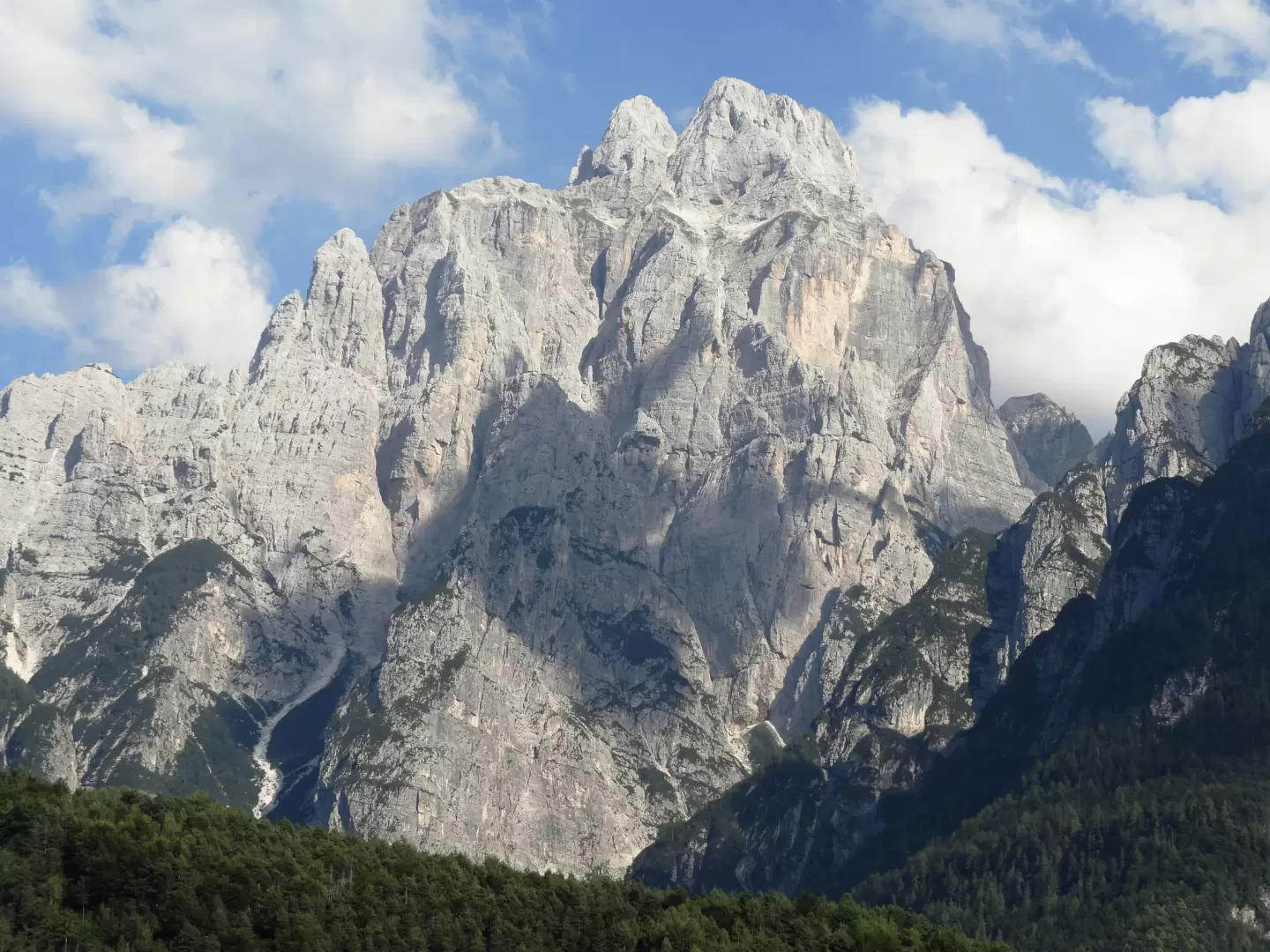Jôf of Montasio

Introduction
The Jôf di Montasio, also known as Jôf dal Montâs in Friulian, Montasch in German and Montaž in Slovene, with an altitude of 2,755 m, is the highest peak of the Montasio Group in the Western Julian Alps and Friuli-Venezia Giulia, dominating the landscape between the valleys of Val Canale, Val Saisera, Val Raccolana and Val Dogna. Its imposing rock mass and central position offer sweeping views of the eastern Dolomites, the Carnic Alps and the rocky bastion of Monte Canin.
.Description
The peak, the third highest in the region after the Coglians and Creta delle Chianevate, is distinguished by its limestone morphology and majestic walls, particularly the western one overlooking Val Dogna. Limited glaciers, among the lowest in the Alps, are preserved on the northern slopes, and the surrounding area is rich in natural habitats, from the pastures of the Montasio plateau to the alpine meadows and rocky escarpments that are home to ibexes and chamois. The climate, typically alpine, allows the summit to be climbed mainly in the summer season: during the winter, weather and snow conditions make the environment harsh and require advanced mountaineering skills.
The mountaineering history of Montasio is full of exploits and significant milestones: the first ascent took place in 1877 by Herman Findenegg and Brusefiar along the south-western slope; subsequently, in the following decades, the difficult northern routes were explored by the famous Julius Kugy and other protagonists of Central European mountaineering, giving rise to itineraries that are still known today as "Kugy-Horn" and "Diretta Kugy". The sector became a theatre of military operations during the First World War, deeply marking the local historical context. Of the numerous ascent possibilities, the 'Findenegg' route, the 'Amalia' ferrata and the 'Diretta Kugy' are among the most popular with experienced hikers. The more classic approach starts from the Giacomo di Brazzà hut and runs through the Forca dei Disteis, while the Suringar bivouac and the Carlo and Giani Stuparich bivouac offer support points for technical ascents.
The Montasio toponym has a multilingual origin, reflecting the linguistic variety of the region, with distinct historical names and variants for each local community. The plateau at the foot of the peak is famous for the production of Montasio cheese, contributing to the agro-pastoral identity of the area. For centuries, the mountain has played a symbolic role for Friuli's alpine communities, in local literature, traditions and folk tales, linked both to chronicles of exploration and to the traditional activities of malga and transhumance.
Information
Table: 2755m
Alternative names: Jôf dal Montâs (Friulian), Montasch (German), Montaž (Slovenian)
Mountain group: Montasio Group
First ascent: 1877
First climbers: Herman Findenegg
First winter ascent:
First winter ascent: